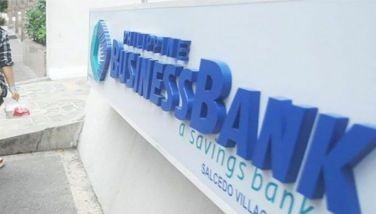ING scales down Philippines growth forecast for this year to 6.1%
MANILA, Philippines — Dutch financial giant ING slashed its 2022 gross domestic product (GDP) growth projection for the Philippines to 6.1 percent from the original target of 6.5 percent as it expects further economic slowdown in the second half.
In a report, ING Bank senior economist Nicholas Mapa said the pandemic left households with low savings, dampening demand and consumption activity. A drop in household consumption drags down GDP given its sizable contribution to overall economic activity.
“We have lowered our full-year growth forecast to 6.1 percent with second half growth slowing to 4.3 percent from 7.9 percent in the first half of the year,” Mapa said.
The country’s GDP growth eased to 7.4 percent in the second quarter from 8.2 percent in the first quarter as painfully high inflation hit the economy.
Mapa said the Philippine economy is fueled mainly by household expenditure as consumption accounts for roughly 72.8 percent of all economic activity.
“Given its sizable contribution, it’s not a stretch to say that the Philippine economy will only go as far as consumption will take it,” the ING economist said.
According to ING, the COVID lockdowns implemented from 2020 to early 2022 caused widespread unemployment, especially in the services sector, which was largely unable to operate during that period.
As a result, ING said the Philippine economy entered a deep recession with households forced to seek aid from the national government, dip into savings, secure loans, or all of the above to make ends meet.
The country exited the pandemic-induced recession with a GDP growth of 5.7 percent last year, reversing the 9.6-percent contraction in 2020 as the economy stalled amid the strict COVID quarantine and lockdown protocols.
With incomes constrained, Mapa said Filipino consumption patterns changed as spending focused on the basics such as food, shelter, and a reliable Wi-Fi connection to attend class or work from home.
On the other hand, spending on all other items, however, saw a sharp drop as Filipinos cut back on discretionary spending or were simply unable to do so because of mobility curbs.
Mapa said the easing of lockdowns resulted in “revenge spending” with households finally able to allocate spending on recreation, dining out and transport.
The economist said that limited access to income forced households to dip into their savings.
“We note that despite the recent string of strong growth posted by the Philippines, households have yet to resume more normal savings behavior, possibly as consumers still indulge in revenge spending,” he said.
He said some households accessed salary-based loans and unsecured debt such as credit cards to cover expenses during a select period of the pandemic.
This was evidenced by lower consumer lending due to tighter credit standards imposed by banks and financial institutions.
“The lockdowns may have led to low savings levels across households but they did not necessarily saddle them with higher levels of debt. The percentage of households with a loan actually fell during the lockdowns perhaps due to tighter credit standards by banks, but also perhaps due to softer demand from households themselves,” Mapa said.
- Latest
- Trending




























